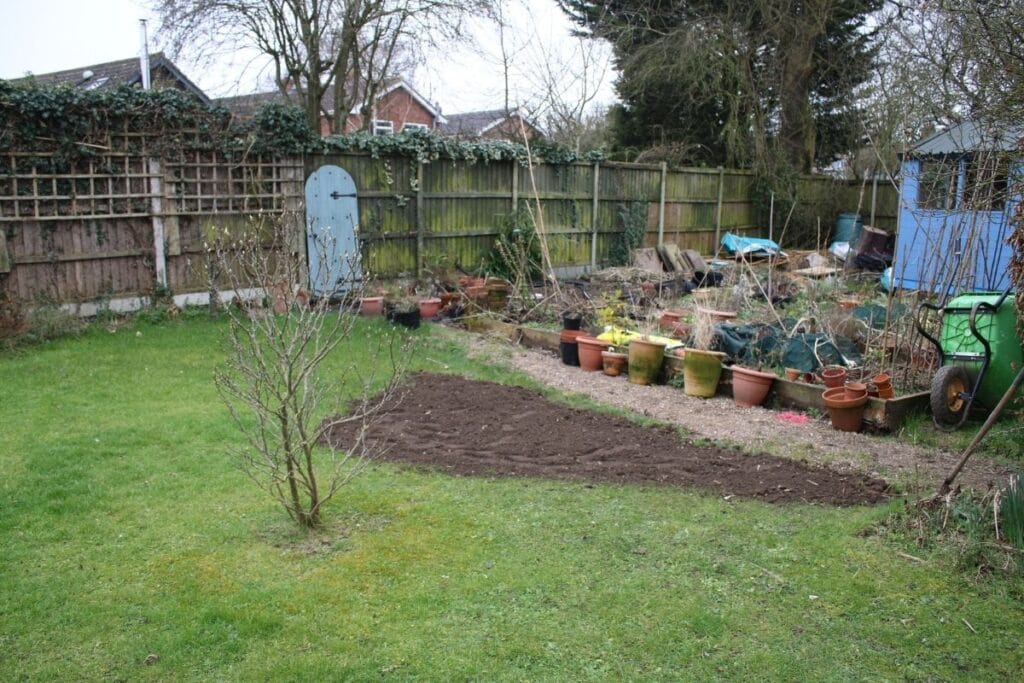Soil is found everywhere in the hills, valleys, mountains, forests, farmlands, lawns, and gardens. It has its wonders and its own secrets to be discovered. Despite being under our feet, it is given little attention.
The ground serves as a habitat for many organisms, a growing medium for all terrestrial plants, and a fount of medicine. It produces food and it makes water clean for human consumption. If we could take account of all roles the soil has played since the beginning of time, undeniably it can be considered the basis of all life on the planet.
Each region on earth has different soil. There are several reasons primarily the type of parent material, climatic conditions, topography, vegetation, and existing living organisms that influence its formation and development through time.
Moreover, these differences certainly affect the physical properties a certain soil has. This could also explain why some are just fit for growing all your favorite plants while others are unfortunately difficult and heavy to work with.
Clay soils are a challenge for many gardeners. It is sticky when wet, and dries as hard as a rock during long summer periods. It is also heavy, dense, and easily becomes compacted making it hard for the plant roots to penetrate.
If you think you have this kind of soil, do not worry because you can still improve your clay soil and build your dream garden without looking for another land. Just devote a little time to knowing what clay soil is and surely you will get insights on how you can effectively manage it.
Clay as a soil textural class
Soil texture refers to the makeup of the mineral particles of clay, sand, or silt. Sand has the biggest size of about 2.0mm to 0.05mm which is easy to see by the naked eye. It is followed by silt from 0.05mm to 0.002mm and lastly microscopic clay which measures less than 0.002mm.
Most soils are a combination of these three and the relative percentage of each mineral creates 12 different textural classes which can be illustrated using a soil textural triangle. (*)
Characteristics of clay soil
A grasp of how soil texture works is important because it dictates certain characteristics of the soil that can affect plant growth. A higher percentage of finer sand particles will make the ground coarse, loose, and well-draining.
Silt when dry feels flour-like and it easily blends with water to create smooth mud. On the other hand, clay-based soil also has its unique characteristics and untouched potential for growing the best plants.
Water retention
Clay soil can take and retain the most water of all types because of its high surface area. This is beneficial for plants because they will suffer less under drought conditions. However, the movement of water through and down clay soil is very slow because of its density.
When left alone, excessive irrigation and rainfall can over saturate the soil which results in ponding on level areas. This condition damages plant roots, limits the uptake of nutrients, stunts the growth and development, and eventually death of the plants.
Air movement
Soil particles are arranged to have spaces in between. Experts called these spaces “pores”. The amount of air and water in these gaps only interchanged with one another. When the soil is too dry, these pores are filled with air.
On the other hand, irrigation and rainfall fill these pores with water. All other living materials and organisms such as plant roots, worms, larvae, and beetles also share the same microscopic air spaces within the soil.
The leaves of the plants take up carbon dioxide to make food and release oxygen into the atmosphere as a byproduct of the process. Underground, the roots do the opposite through respiration. The oxygen present in the air spaces is collected by the roots to convert sugar molecules into energy. In return, they give off carbon dioxide.
But clay particles are very fine and they fit close to each other. This means that there are smaller air spaces and the available oxygen is limited especially when the soil is saturated with water or when it becomes compacted.
This becomes a problem for plants growing in heavy clay because deep roots are deprived of oxygen and they cannot have enough energy to support their growth and development.
Workability
Soil workability refers to the ease of tillage and other mechanical operations in support of producing plants. Clay soil is easily compacted and is difficult to dig when there is not enough moisture.
It becomes hard and brittle, and it resists the pressure applied when using tools to plow and cultivate the ground. When wet, it becomes dense, very sticky, and adheres to all objects including your working boots and gardening tools.
It also develops plasticity or the ability to be formed and remain in different shapes. These characteristics had made clay the oldest material for ceramic. But from a gardener’s perspective, soil that does not cooperate well with the desired outcome is frustrating and a lot of hassle to work with.
Nutrient content
Plants need around 17 essential elements to support their growth and development: carbon (C), hydrogen (H), oxygen (O), nitrogen (N), phosphorus (P), potassium (K), calcium (Ca), magnesium (Mg), sulfur (S), iron (Fe), manganese (Mn), copper (Cu), zinc (Zn), molybdenum (Mo), boron (B), chlorine (Cl), and nickel (Ni).
Almost all of these macroelements and microelements are supplied mainly by the ground except for carbon and oxygen which are taken up by plants in the form of gas (CO2 and O2 respectively). Healthy plants require the presence of all these nutrients in optimum amounts.
Clay particles are negatively charged. It can easily bind with nutrients which usually take the form of cations or positively charged molecules such as ammonium (NH4+), potassium (K+), magnesium (Mg2+), and calcium (Ca2+).
Clay bonds to these elements strongly that it prevents them from leaching deep into the soil. Thus, it is considered that clay has the highest capacity to store available nutrients for plants uptake than any other type.
Soil test for clay soil
Soil texture differs from place to place. Although you may already have an idea of what kind of soil you have in your existing lawn or garden, there are different ways to test for soil texture.
Field test for textural classes
These tests are inexpensive and can be quickly done in the field. However, it requires practical knowledge and experience to give valid results.
Ball test
Take a handful of soil. Wet it with water. Strongly squeeze it in your palm. If the soil takes and retains the shape of your hand, you probably have clay. If it does not, it has a high proportion of sand particles.
Ribbon test
Get a small amount of soil in your hand. Make sure to remove any gravel, stones, and other debris. If it is dry, wet it slowly with water. Make a ball of about 3cm. If it cannot make a ball, then it is sandy.
Otherwise, gently roll it against a surface to make a shape similar to a sausage. If the sausage reaches up to 15 cm long, slightly bend it and see if it retains the shape. If yes and it does not crack, you have clay.
Jar Test
This test will give you an idea of how much clay you have in your soil sample. Put a quarter-full of soil in a jar. Fill the jar with water and mix it thoroughly. Set aside and wait about an hour. The water will become clear once all particles have settled.
The difference in the size of sand, silt, and clay will create a distinction. Clay being the finest, will be at the topmost layer followed by silt, and sand at the bottom. If the clay has the largest proportion, then you have clay soil.
Laboratory test for textural classes
A test done inside a laboratory will give you a more accurate definition of soil texture. They do mechanical soil analysis and will give you the actual count of clay, silt, and sand particles present in your samples. The proportions will then be analyzed using the soil texture triangle.
If clay exceeds 40%, it will be labeled as clay soil. However, the testing is a bit expensive and will surely take some time before the results are out.
Improving clay soil
Soil texture is a fixed property and there’s no way to turn your clayey soil to sandy or loamy types. But did you know that clay soil problems are more structural than textural? Soil structure refers to the way soil particles are arranged or assembled.
In the case of clay, they form plate-like structures that are overlapping with each other. The goal is to make it loose, crumbly, and granular to allow water and air movement while still taking advantage of its properties to hold more moisture and nutrients.
Increase organic matter
Organic material refers to any residue of living organisms that will soon undergo the process of decomposition. After breaking down, the decomposed organic materials are termed organic matter which is responsible for the natural darkening, increasing fertility, and conditioning of the soil. Organic matter improves clay soil in many ways:
Promotes soil aggregation
Several studies reveal that adding organic matter to agricultural soils results in a decrease in compaction and more air space. Organic matter acts as a binding agent of soil particles which are assembled as aggregates.
In return, clay does not become quite sticky reminiscent of a potter’s clay but crumbles when touched. The aggregation also favors water to infiltrate the soil and it encourages deeper rooting of plants.
Revitalize soil biology
A quarter of our biodiversity is made up of living creatures found in the ground. Although soil generally has only about 3-6% of organic matter, it is very important in supporting this entire ecosystem. Organic matter feeds beneficial soil microbes, earthworms, ants, insects, snails, and millipedes.
Each organism plays a vital role in creating a healthy soil system. Earthworms as an example, are considered lungs of the soil world because they help the ground breathe.
As they journey below the surface, they create burrows that allow air and water to easily pass through. This prevents waterlogged conditions which are common for clay.
The presence of these worms also helps loosen up compacted soil, mix organic matter deeper into the ground, and enable plant roots to effortlessly penetrate the ground without causing physical damage to the root tips. Many decomposed organic materials mean more food for them.
Buffers soil pH
One factor that affects the structure of the soil is pH. It is observed that clay particles tend to be more sticky and hard when soil pH becomes too acidic or too alkaline. Humic acid, a chemical produced by decomposing organic matter, also acts as a pH buffer of the soil. It means it helps neutralize the effect of changes in pH.
The functioning of soil microbes is also kept in stability at optimum pH. Many of the metabolic processes needed by plants and animals in the soil are dependent on the availability of nutrients and enzyme activities which are drastically affected by changes in pH. Thus, the addition of organic matter will ensure ideal soil conditions for the growth and development of all flora and fauna.
Composting is a way to create a large volume of organic matter that can be added to heavy clay. It is a mixture of organic materials such as well-aged manure, plant trimmings, leaves, food scraps, and paper products.
The temperature, moisture, and gas exchange are optimally maintained to facilitate good decomposition. Other beneficial soil-building microbes and certain species of worms can also be incorporated to hasten the breaking down of materials.
Raise garden beds
Raised beds do not only help a garden look organized but also have many gardening benefits. The practice prevents compaction by reducing foot traffic specifically by creating designated work areas and walkways for people. It also improves drainage which is why in heavy rainfall and flood-prone areas, planting in raised beds saves plants from drowning.
Aerate the soil
The goal of aerating the soil is to introduce oxygen to the roots of the plants. It can be done by poking holes in the ground with the use of tools such as forks, spikes, or plugs. This makes the soil structure loose without disrupting or damaging the soil’s biology. However, for your lawns where seeing holes are not aesthetically pleasing, you can use liquid soil aerators that work just fine.
Use clay busting plants
Plants that have deep taproots and extensive fibrous root systems can naturally break up hard and compacted clay soil. This includes planting daikon radish, yarrow, false sunflower, alfalfa, mustard, daylilies, and many more.
Add organic mulch
Organic mulches are materials that include leaves, clippings, grain straw, dried or fresh hay, wood shavings, hulls, and cut forage which are placed over the soil surface. Mulching brings a lot of benefits to the garden.
It improves soil structure by preventing erosion, protecting the habitat of soil microorganisms, and retaining moisture. It is also a ready source of organic matter. In existing lawns, leaving grass clippings after using your lawnmowers provides a valuable source of nitrogen.
Maintaining the quality of improved clay soil
The soil improvement process requires patience and unwavering commitment. It’s not a one-time big-time event but a continuous effort of learning, building, and conserving everything that’s in the soil.
This may include routinely adding soil for amending clay soil such as compost, peat moss and mulches or simply spending hours creating air pockets with your broad fork. Below are some practical ways you can also keep in mind to prevent coming back from a heavy clay state.
Avoid foot traffic
Foot traffic will exacerbate the soil compaction because it will squeeze the air from the pore spaces. As mentioned above, creating workspaces and walkways redirect the movement of people from areas you will plant. If possible, limit the use of heavy types of machinery and equipment.
Do not add sand
Contrary to some beliefs, adding sand to your poor clay soil will make it harder and concrete-like. Clay particles are very small and they will just fit into the coarse texture and gaps surrounding the sandy soils. The problems with clay lie in its ability to form good aggregates or soil structure rather than its texture. Adding compost is way more practical and significant.
Shift to no-till
Tillage is the mechanical turning of the first 6-10” of soil to prepare for planting. It kills weeds and pulverizes soil structure to ease farming activities such as transplanting and fertilizer application.
However, the deeper part of the soil which is flipped on the surface is easily eroded by wind and water turning to dust. The process also exposes millions of beneficial soil microbes and earthworms to predators such as birds and rodents. Tillage may be beneficial for the farmers and gardeners but the process compromises soil health.
FAQs
How do you break down clay soil fast?
One method to break down clay soil quickly is to incorporate organic matter such as compost, aged manure, or shredded leaves into the soil. This helps improve soil structure, allowing for better drainage and root penetration.
How can I improve my clay soil naturally?
Improve clay soil naturally by adding organic amendments like compost, leaf mold, or aged manure. These materials help break up clay particles, improve soil structure, and increase nutrient content. Additionally, planting cover crops like clover or alfalfa can help improve soil health over time.
How do you enrich clay soil?
Enrich clay soil by regularly adding organic matter such as compost, leaf mold, or well-rotted manure. Incorporating these materials into the soil helps improve drainage, aeration, and nutrient content, creating a more hospitable environment for plants.
Is lawn lime good for clay soil?
Lawn lime can be beneficial for clay soil in certain situations. It helps to raise the pH of acidic soils, which can improve soil structure and nutrient availability. However, it’s essential to test the soil pH first to determine if lime application is necessary, as excessive liming can lead to alkaline soil conditions.
Also check our guide on potting soil if you’re planning to have potted plants.
See more: What is living soil?
*image by CarminaPhotography/depositphotos







